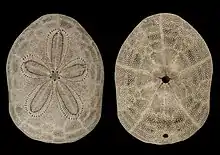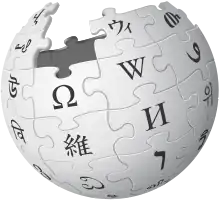Gnathostomata
Translingual

Etymology
From Ancient Greek γνάθος (gnáthos, “jaw”) + στόμα (stóma, “mouth”) + Latin -ata, neutral plural of suffix -atus, equivalent to -ate.
Proper noun
Gnathostomata
- A taxonomic infraphylum within the subphylum Vertebrata – those vertebrates that have jaws.[1]
- A taxonomic superorder within the class Echinoidea – some sea urchins, including the sand dollars.
Hypernyms
- (infraphylum): Eukaryota - superkingdom; Animalia - kingdom; (Eumetazoa - subkingdom;) Bilateria - subkingdom; (Nephrozoa - clade) Deuterostomia - infrakingdom; Chordata - phylum (≈ Chordata Craniata - clade); Vertebrata - subphylum[1]
- (superorder): Eukaryota - superkingdom; Animalia - kingdom; Bilateria - subkingdom; Deuterostomia - infrakingdom; Deuterostomia - superphylum; Echinodermata - phylum; Echinozoa - subphylum; Echinoidea - class
Hyponyms
- (infraphylum): Actinopterygii, Sarcopterygii, Tetrapoda - superclasses,[1] Ikhthues
- (superorder): Clypeasteroida, Holectypoida - orders
References
- (infraphylum):
 Gnathostomata on Wikipedia.Wikipedia
Gnathostomata on Wikipedia.Wikipedia  Gnathostomata (Vertebrata) on Wikispecies.Wikispecies
Gnathostomata (Vertebrata) on Wikispecies.Wikispecies
- (superorder):
 Gnathostomata (echinoid) on Wikipedia.Wikipedia
Gnathostomata (echinoid) on Wikipedia.Wikipedia  Gnathostomata (Euechinoidea) on Wikispecies.Wikispecies
Gnathostomata (Euechinoidea) on Wikispecies.Wikispecies
- Ruggiero MA, Gordon DP, Orrell TM, Bailly N, Bourgoin T, Brusca RC, et al. (2015) A Higher Level Classification of All Living Organisms. PLoS ONE 10(4): e0119248. PMID 25923521, doi: 10.1371/journal.pone.0119248
This article is issued from Wiktionary. The text is licensed under Creative Commons - Attribution - Sharealike. Additional terms may apply for the media files.
